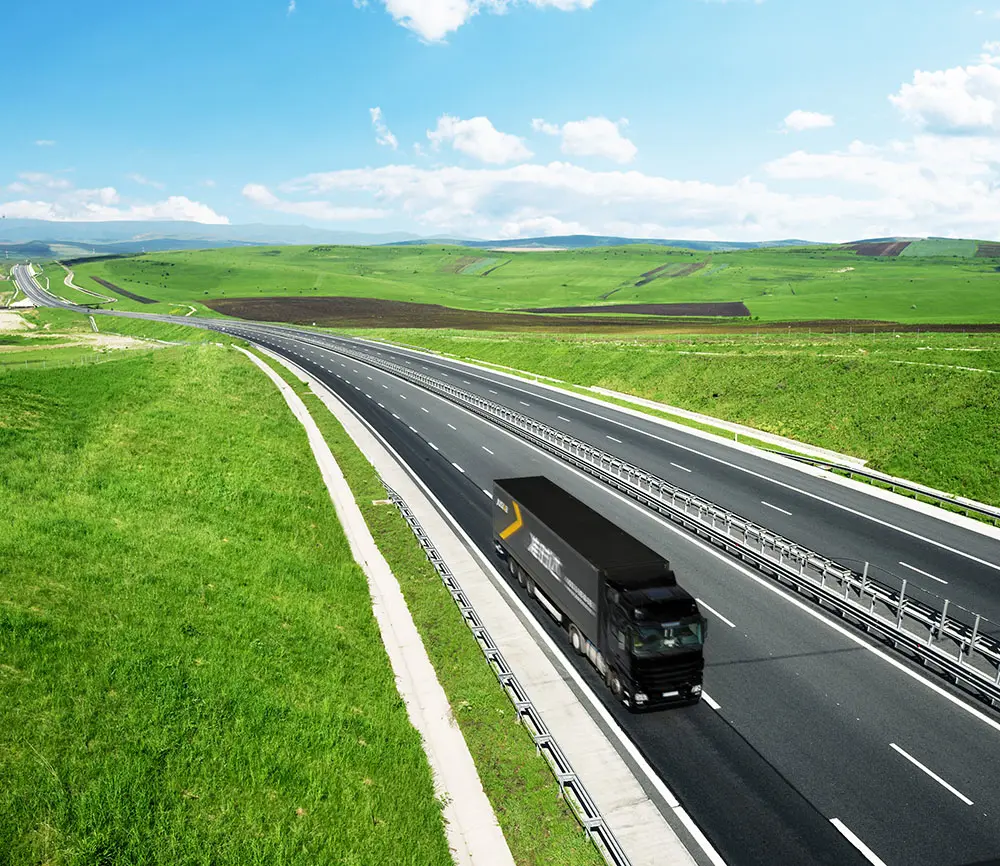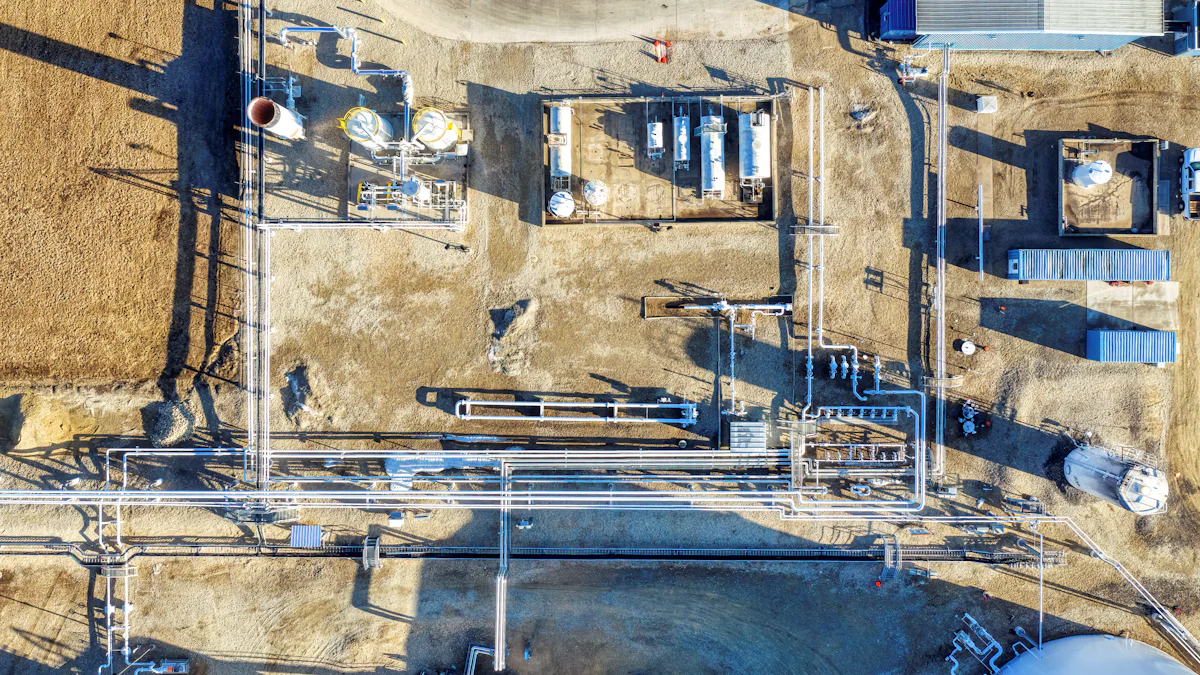Analyzing Cost Trends in Land Transport for 2025

Understanding the financial landscape of land transport 2025 is crucial for stakeholders across industries. Businesses must adapt to rising operational expenses, while policymakers face pressure to balance infrastructure investments with fiscal responsibility. Consumers, too, encounter higher transportation costs, driven by inflation and evolving market dynamics. The final mile of delivery now accounts for up to 53% of total transport expenses, underscoring its economic significance. Additionally, the shift toward sustainable practices, such as zero-emission vehicles, presents both challenges and economic benefits. These trends demand proactive strategies to ensure efficiency and long-term viability in a rapidly changing environment.
Key Takeaways
Fuel prices will continue to be a major cost driver in land transport, making it essential for businesses to monitor global oil market trends and consider alternative energy sources.
Inflation and labor shortages are expected to increase operational expenses, highlighting the need for companies to invest in workforce development and efficient resource management.
Embracing technological advancements, such as automation and predictive analytics, can enhance operational efficiency and reduce long-term costs despite initial investment challenges.
Sustainability initiatives not only comply with regulations but also offer potential long-term savings and improved brand reputation.
Government grants and tax incentives can significantly alleviate the financial burden of transitioning to greener practices, making it crucial for businesses to stay informed about available support.
Supply chain disruptions and geopolitical tensions will continue to impact transportation costs, necessitating agile strategies and advanced logistics solutions to maintain efficiency.
Proactive planning and scenario modeling are vital for businesses to navigate the evolving landscape of transportation costs and capitalize on emerging opportunities.
Key Cost Drivers in Land Transport 2025

Fuel Prices and Energy Costs
Fuel prices remain a critical factor influencing transportation expenses. The volatility of global oil markets directly impacts road transport cost, as fuel constitutes a significant portion of operational budgets. In 2025, fluctuations in fuel prices are expected to persist due to geopolitical tensions and supply chain disruptions. These changes will likely lead to increased transport prices, especially in regions heavily reliant on fossil fuels.
The shift toward alternative energy sources, such as electricity and hydrogen, introduces both opportunities and challenges. While these technologies promise long-term savings, their initial implementation requires substantial investment. Governments worldwide are funding projects to support the adoption of cleaner energy solutions, which may help stabilize energy costs over time. However, the transition period could see mixed impacts on transportation budgets.
Inflation and Labor Market Challenges
Inflation continues to exert pressure on transportation costs. Rising prices for goods and services, including vehicle maintenance and spare parts, contribute to higher operational expenses. In 2025, inflation is projected to remain a significant challenge for the industry. For instance, truckload prices are expected to increase, reflecting the broader economic trend of rising costs.
Labor shortages further compound the issue. The transportation sector faces difficulties in recruiting and retaining skilled drivers, leading to higher wages and benefits. These labor market challenges drive up costs for businesses relying on road transport. Additionally, inflation affects other aspects of the supply chain, such as warehouse operations and last-mile delivery, amplifying its impact on overall transport prices.
Technological Advancements and Automation
Technological advancements play a dual role in shaping transportation costs. On one hand, automation and digitalization improve efficiency, reducing reliance on manual labor and minimizing errors. Autonomous vehicles and smart logistics systems streamline operations, potentially lowering costs in the long term. On the other hand, the initial investment in these technologies can be substantial, posing a financial burden for smaller companies.
Projects focusing on artificial intelligence and machine learning are transforming the industry. Predictive analytics optimize route planning, reducing fuel consumption and delivery times. However, the integration of these technologies requires significant infrastructure upgrades. Governments and private entities are collaborating on projects to modernize transportation networks, ensuring they can support advanced systems.
The adoption of these innovations varies by region. For example, car rental rates are forecasted to rise in North America and LATAM, while dropping in Asia-Pacific. This disparity highlights the uneven pace of technological implementation and its influence on transport prices. Companies must carefully evaluate the cost-benefit ratio of adopting new technologies to remain competitive in a rapidly evolving market.
Sustainability Efforts and Their Impact on Costs

Decarbonization and Emission Reduction Standards
Decarbonization initiatives are reshaping the transportation industry. Governments and organizations worldwide are implementing stringent emission reduction standards to combat climate change. These regulations aim to lower greenhouse gas emissions, particularly from heavy-duty vehicles. For instance, zero-emission trucks (ZETs) are emerging as a transformative solution. Over their lifetime, ZETs can reduce fuel expenditures by up to 40-50%, offering significant cost savings. In regions like India, accelerated adoption of ZETs could save billions of dollars by reducing diesel consumption and oil costs.
Carbon offset programs are also gaining traction. These programs encourage businesses to invest in projects that neutralize their carbon footprint. Beyond reducing emissions, such initiatives support low-carbon innovation and provide financial aid to economically disadvantaged communities. By integrating these measures, companies not only comply with regulations but also enhance their environmental credibility. However, the initial investment in decarbonization technologies and compliance measures may temporarily increase operational expenses.
Transition to Battery Electric Vehicles (BEVs) and Alternative Fuels
Battery Electric Vehicles (BEVs) are playing a pivotal role in the transition toward sustainable transportation. These vehicles eliminate reliance on fossil fuels, reducing both emissions and long-term energy costs. Technologies supporting BEVs are ready for deployment in specific scenarios, making them a viable option for decarbonizing fleets. Companies like DSV are actively testing low- and zero-emission technologies, showcasing the industry's commitment to sustainability.
Despite these challenges, the long-term benefits of reduced fuel costs and environmental impact outweigh the initial financial hurdles.
Consumer and Corporate Demand for Green Logistics
Consumers increasingly prioritize eco-friendly practices, influencing corporate policies. Businesses are responding by adopting sustainable transportation methods, such as using BEVs and optimizing delivery routes. This shift aligns with growing sustainability efforts and regulatory requirements for sustainability.
Corporate initiatives often include partnerships with manufacturers to test and deploy zero-emission technologies. These collaborations drive innovation and accelerate the adoption of green logistics solutions. Additionally, government-funded projects, such as the RAISE program, support efforts to reduce greenhouse gas emissions and improve climate resilience. By addressing environmental concerns, companies not only meet consumer expectations but also gain a competitive edge in the market.
The transition to sustainable practices involves upfront costs, including investments in technology and infrastructure. However, these efforts lead to long-term savings and enhanced brand reputation. As sustainability becomes a core focus, businesses must adapt to evolving demands while balancing financial and environmental objectives.
Market Dynamics Shaping Land Transport Costs
Supply Chain Disruptions and Transport Capacity
Supply chain disruptions continue to challenge the transportation industry. Events such as local strikes, extreme weather, and geopolitical tensions create unpredictable conditions. These factors often lead to delays, increased costs, and reduced transport capacity. For instance, the ongoing conflict between Russia and Ukraine has disrupted global crude oil markets, indirectly affecting road freight operations. Additionally, extreme weather events, like hurricanes and floods, damage infrastructure and delay shipments, further straining supply chain disruptions.
Transport capacity remains a critical concern. The rising demand for goods, coupled with limited availability of vehicles and drivers, exacerbates the issue. Companies face difficulties in meeting delivery timelines, which impacts customer satisfaction. To address these challenges, businesses are investing in advanced logistics technologies and infrastructure improvement projects. These efforts aim to enhance efficiency and mitigate the effects of supply chain disruptions.
Geopolitical and Economic Influences
Geopolitical tensions significantly shape transportation costs. Conflicts in regions such as the Middle East and Southeast Asia disrupt critical trade routes. For example, escalating crises in the Middle East have forced carriers to reroute vessels via the Cape of Good Hope, increasing journey times and operational expenses. Similarly, airlines avoid certain airspaces due to geopolitical issues, leading to longer routes and higher fuel consumption.
Economic factors also play a pivotal role. Inflation and fluctuating currency exchange rates impact the cost of goods and services within the transportation sector. Geopolitical disruptions, combined with economic instability, create volatile market conditions. Businesses must remain agile to adapt to these changes. Collaborative projects between governments and private entities aim to stabilize the market by improving infrastructure and fostering international trade relations.
"Geopolitical tensions and economic instability are reshaping global freight patterns, requiring innovative solutions to maintain efficiency."
Competition and Pricing Strategies
Competition within the transportation industry drives companies to adopt innovative pricing strategies. Businesses strive to offer competitive rates while maintaining profitability. However, rising operational costs, influenced by fuel prices and labor shortages, make this a challenging task. Companies often leverage technology to optimize routes and reduce expenses, ensuring they remain competitive in a dynamic market.
Pricing strategies vary based on regional market dynamics. In highly competitive areas, businesses focus on value-added services to differentiate themselves. For example, some companies invest in sustainability projects, such as transitioning to electric vehicles, to appeal to environmentally conscious consumers. These initiatives not only enhance brand reputation but also align with global decarbonization goals.
Collaboration among industry players is becoming increasingly common. Joint ventures and partnerships enable companies to share resources and reduce costs. By pooling expertise and infrastructure, businesses can navigate market challenges more effectively. This approach fosters innovation and ensures long-term growth within the transportation sector.
Government Policies and Infrastructure Investments
These measures influence operational expenses, market competitiveness, and the overall efficiency of transport systems.
Grants, Subsidies, and Tax Incentives
Grants, subsidies, and tax incentives remain essential tools for supporting the transportation sector. Governments allocate significant funding to encourage the adoption of sustainable practices and modernize transport systems. For instance, programs like Rebuilding American Infrastructure with Sustainability and Equity aim to enhance transportation networks while promoting environmental and social equity. These initiatives provide financial assistance to businesses investing in cleaner technologies, such as battery electric vehicles (BEVs) and alternative fuels.
Tax incentives also reduce the financial burden on companies transitioning to greener operations. By offering deductions or credits for adopting zero-emission technologies, policymakers incentivize sustainable practices. Additionally, transportation infrastructure grants support projects that improve road safety, reduce congestion, and enhance connectivity. These measures not only lower operational costs but also contribute to long-term economic growth.
Infrastructure Development and Maintenance
Infrastructure development and maintenance are critical for ensuring efficient and reliable transportation systems. Governments worldwide are prioritizing projects that expand and modernize road networks. The Federal Highway Administration, for example, has allocated $14.7 billion to the Surface Transportation Block Grant Program for fiscal year 2025. This funding supports initiatives aimed at improving road conditions, reducing traffic delays, and enhancing overall transport capacity.
The cost of expanding roads, however, presents a significant challenge. Construction expenses, coupled with inflation and labor shortages, drive up project costs. Despite these hurdles, investments in infrastructure yield substantial benefits. Improved roadways reduce vehicle wear and tear, lower fuel consumption, and enhance delivery timelines. Moreover, advanced technologies, such as smart traffic management systems, optimize traffic flow and minimize congestion.
Maintenance remains equally important. Neglected infrastructure leads to higher repair costs and increased safety risks. Regular upkeep ensures the longevity of transport assets and prevents costly disruptions. By prioritizing both development and maintenance, governments create a robust foundation for sustainable transportation growth.
Regulatory Changes and Compliance Costs
Regulatory changes significantly impact transportation costs. In 2025, stricter emission standards and safety regulations will require businesses to adapt their operations. Compliance with these rules often involves substantial investments in technology and training. For example, companies must upgrade their fleets to meet new decarbonization targets, which may include adopting BEVs or retrofitting existing vehicles with cleaner technologies.
While these measures increase short-term expenses, they offer long-term benefits. Reduced emissions enhance environmental sustainability, and improved safety standards protect both drivers and cargo. Policymakers also implement regulations to address equity concerns, ensuring that transportation systems serve all communities effectively. By fostering inclusivity, these policies contribute to a more equitable and resilient transport network.
Collaboration between public and private sectors is crucial for managing compliance costs. Joint efforts streamline regulatory processes and provide businesses with the resources needed to meet new requirements. Additionally, government-funded projects alleviate financial pressures by covering a portion of the expenses associated with regulatory compliance. This approach ensures that companies can adapt to policy changes without compromising their competitiveness.
The cost landscape of land transportation in 2025 will be shaped by several critical factors. Fuel prices, sustainability initiatives, market dynamics, and government policies will significantly influence operational expenses. Stakeholders can mitigate rising costs by adopting green technologies, modernizing internal processes, and leveraging government-funded projects. Monitoring global events and analyzing freight movements will enable data-driven decisions, ensuring budget alignment with market realities. Proactive planning, including scenario modeling, helps businesses anticipate challenges and capitalize on emerging opportunities. By embracing innovation and staying informed, organizations can navigate the evolving transportation sector with confidence and efficiency.
FAQ
What are the primary factors influencing trucking costs in 2025?
Trucking costs in 2025 are shaped by several evolving factors. While fuel prices have shown some stability, other expenses like driver wages, vehicle lease or purchase prices, and maintenance costs have risen significantly. These changes reflect broader economic trends, including inflation and labor shortages, which continue to impact the transportation industry.
How does sustainability affect transportation costs?
Sustainability initiatives play a dual role in shaping costs. On one hand, adopting technologies like zero-emission vehicles (ZEVs) and alternative fuels can reduce long-term operational expenses. On the other hand, the initial investment in infrastructure, such as charging stations and fleet upgrades, increases short-term costs. Companies must balance these expenses with the benefits of reduced emissions and improved environmental credibility.
How do geopolitical tensions impact transportation costs?
Geopolitical tensions disrupt trade routes and increase operational expenses. For example, conflicts in regions like the Middle East force carriers to reroute shipments, leading to longer travel times and higher fuel consumption. These disruptions also create volatility in global oil markets, further influencing transportation costs.
Key Insight: "Geopolitical tensions and economic instability are reshaping global freight patterns, requiring innovative solutions to maintain efficiency."
What role does technology play in reducing transportation costs?
Technology significantly enhances efficiency in the transportation sector. Innovations like autonomous vehicles, predictive analytics, and smart logistics systems streamline operations and reduce errors. While the initial investment in these technologies can be substantial, they offer long-term savings by optimizing fuel consumption, improving delivery timelines, and minimizing labor dependency.
How do government policies influence transportation expenses?
Government policies, including grants, subsidies, and tax incentives, directly impact transportation costs. Programs like the Surface Transportation Block Grant provide funding for infrastructure improvements, reducing congestion and enhancing efficiency. Additionally, tax incentives encourage businesses to adopt sustainable practices, such as transitioning to electric vehicles, which can lower operational expenses over time.
What challenges do labor shortages pose to the transportation industry?
Labor shortages remain a critical challenge for the transportation sector. Recruiting and retaining skilled drivers has become increasingly difficult, leading to higher wages and benefits. These increased labor costs, combined with inflation, drive up overall transportation expenses. Companies are exploring automation and other technologies to address these workforce challenges.
How do supply chain disruptions affect transportation costs?
Supply chain disruptions, caused by events like extreme weather or strikes, create unpredictable conditions that increase costs. Delays, reduced transport capacity, and damaged infrastructure strain the system. Businesses are investing in advanced logistics technologies and infrastructure improvements to mitigate these
See Also
Affordable Transportation Management: Your Budget's Best Ally
Get Prepared: Discovering New Transport Tech for Supply Chains
Understanding Supply Chain Cost Optimization Economics
